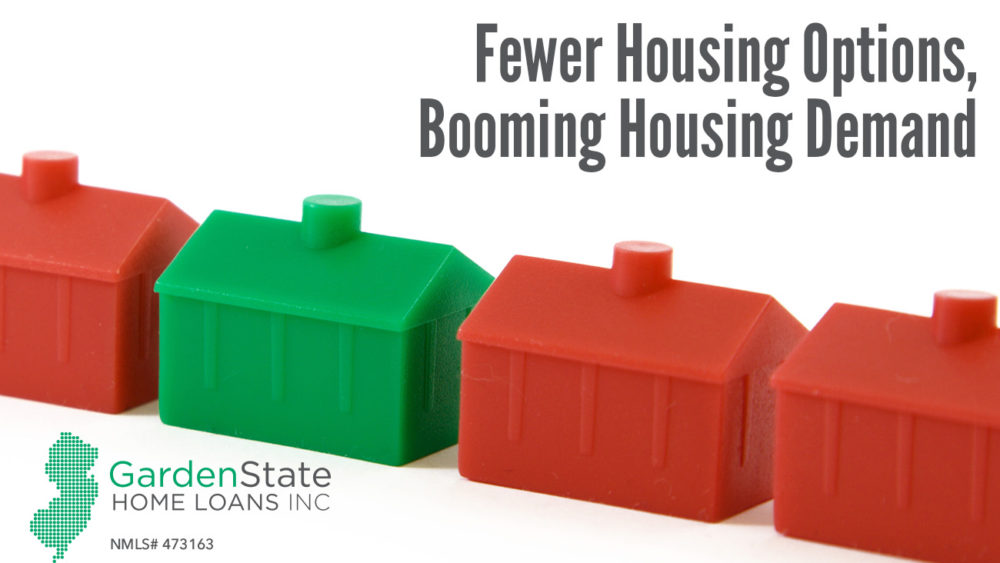
Understanding the Seller’s Market
The basic theory of supply and demand impacts housing market. As people are pursuing homeownership, there are less housing options available. Our country is currently facing a short supply of houses, leaving sellers in the driver’s seat. Housing prices are increasing due to low supply from sellers and high demand from buyers. The high demand for homes is increasing due to changing demographics. Millennials, ages 18-32, are now in prime home-buying years, thus contributing to incredibly high demand for homes. A TransUnion report also observes an increasing amount of renters now looking to become homeowners.
Buyers need to prepare themselves for the housing market with higher bids or more cash down. Additionally, they must focus on particular types of housing for their individual needs.
Zillow Market Overview June 2017 asserts housing listings decreased 11% compared to 2015 and 2016. Markets in San Jose and San Diego, California as well as Columbus, Ohio are experiencing a downtrend. Research shows the driving force of the lack of listings is not due to fewer sellers, but extremely high housing demands. The current lowest median of a house traded on market is just 73 days. This is 38 days less than the past lowest average, 111 days in May 2012. This shows buyers are heavily investing in a homeownership future, creating booming home values. The national median home value increased to 7.4% ($200,400) compared to June of last year. However, this trend does not match rental housing markets. Rent is growing at a slow pace- only up 1.1% from the last year.
Why is inventory falling short of listings?
The housing inventory has reduced in the past few years. For-sale homes are declining at the fastest pace. The potential homebuyers now have 9% fewer homes to choose from than a year ago. There are multiple reasons for this diminishing economic situation. According to an Attom Data Solution report, there a variety of patterns creating this shortage in homes:
- Potential sellers are holding on their homes longer. Investors who bought homes during a recession are earning rental income. They are not in a rush to sell their homes.
- On the other hand, some owners still can not sell before they pay back a certain amount of mortgage, meaning they owe more than the homes are worth.
- Another aspect for a shortage of available home are fewer foreclosures. Foreclosures are at meager levels in many areas, thus reducing opportunities to sell and buy homes.
- Comparatively, numbers of new home constructions decreased to keep pace with the demand. Furthermore, if there are any newly built homes, they are typically beyond the budget of many first time and entry level home buyers in the market.
House hunting in a tight market:
- Competition for lower and mid priced houses is becoming tough. The market in the West, especially Seattle, is now entirely a sellers market. Buyers must understand that sellers are prompted with increasing demand everyday. If the buyer has found the right house for themselves, there is not much time to make an offer. While this may sound impatient, this is how the current market is pacing. Additionally, buyers are expected to put more cash down for ‘due diligence’ deposit. If the buyer likes a different home better, and walks away from a purchase contract, there is a fee that must be paid. Sellers have raised demand from $500 to $1,000 and sometimes even $2,500.
- According to Ms. Stacie Staub, the founder and owner of West & Main Homes, buyers must have cash available to offer it to the seller. Sellers dodge contingency offers and prefer all cash bids. Furthermore, sellers may not accept the offer unless paid in cash.
- Similarly, Zillow recommends buyers to act fast in the home buying process. Buyers should understand their budget and get pre-approved for a mortgage. Additionally, buyers should work with a knowledgeable and well-connected local real estate agent for assistance through the homeownership process.
Any Effect on Mortgage Rates?
The mortgage rates are still low, reducing some of the pressure from rising home prices. The rates for 30-years fixed-rate mortgage dipped 0.5 point down on July 27th, 2017 to 3.92%. However, the rate is slightly higher than compared to the average of 3.48% a year ago.


Comments are closed.